I am using a GridBagLayout to create a JPanel, called 'Preset', that gets replicated several times in a JFrame. Each Preset will have multiple rows (JPanels). My goal is that only one line (the first) will show up, but when the edit button is clicked, they will all show. Right now, the edit button works, but there is a massive space between the lines. I want it to be such that when the extra lines are collapsed, each Preset will be directly above each other (no space). You can see in the following picture what I am talking about.
This is how it looks:

This is how I want it to Look:

I am fairly certain I need to do something with the GridBag, but I don't know what. I have read several tutorials and have written it as I thought it should be, but no luck.
package SSCCE;
import java.awt.BorderLayout;
import java.awt.Component;
import java.awt.Dimension;
import java.awt.FlowLayout;
import java.awt.GridBagConstraints;
import java.awt.GridBagLayout;
import java.awt.GridLayout;
import java.awt.Toolkit;
import java.awt.event.ActionEvent;
import java.awt.event.ActionListener;
import java.io.IOException;
import javax.swing.JButton;
import javax.swing.JComboBox;
import javax.swing.JFrame;
import javax.swing.JLabel;
import javax.swing.JPanel;
import javax.swing.JScrollPane;
import javax.swing.JTextField;
public class UI extends JFrame{
private final static int HEIGHT = 600;
private final static int WIDTH = 730;
private JPanel pane; //Pane that stores accounts
private JScrollPane scroller;
private Preset[] branches;
public static void main(String[] args) {
JFrame frame = new UI();
}
public UI(){
//Make the UI close when the exit button is clicked
this.setDefaultCloseOperation(JFrame.EXIT_ON_CLOSE);
//Sets the size of the UI
this.setSize(WIDTH, HEIGHT);
//Set the layout and add components to it
this.setLayout(new BorderLayout());
//Reads in the settings and sets up the branches
populateBranches();
pane = new JPanel();
pane.setLayout(new GridLayout(branches.length,1));
for (int i = 0; i < branches.length; i++){
pane.add(branches[i]);
}
//Create the center pane of the BorderLayout
scroller = new JScrollPane(pane);
scroller.createVerticalScrollBar();
this.add(scroller,BorderLayout.CENTER);
//Makes the UI visible
this.setVisible(true);
}
private void populateBranches(){
//Populates the branches array based on what is read in, or not read in from the file
branches = new Preset[15];
for (int i = 0; i < branches.length; i++){
branches[i] = new Preset();
branches[i].setEnabled(false);
}
}
public class Preset extends JPanel{
private JTextField eName;
private JButton edit;
private JButton activate;
private JComboBox printer;
private JPanel line1;
private JPanel line2;
private String branchName;
private String ipAddress;
private boolean enableAll;
public Preset(){
eName = new JTextField(20);
edit = new JButton("Edit");
activate = new JButton("Activate");
JPanel nameContainer = new JPanel();
nameContainer.setLayout(new FlowLayout());
nameContainer.add(eName);
printer = new JComboBox();
//
line1 = new JPanel();
line1.setLayout(new FlowLayout());
line1.add(nameContainer);
line1.add(edit);
line1.add(activate);
//
line2 = new JPanel();
line2.setLayout(new BorderLayout());
line2.add(printer, BorderLayout.WEST);
GridBagLayout grid = new GridBagLayout();
GridBagConstraints cons = new GridBagConstraints();
cons.fill = GridBagConstraints.BOTH;
this.setLayout(grid);
cons.ipady = 100;
cons.ipadx = 100;
cons.weighty = 0D;
cons.gridx = 0;
cons.gridy = 0;
cons.gridwidth = 2;
cons.gridheight = 1;
grid.setConstraints(line1, cons);
this.add(line1);
cons.ipady = 100;
cons.ipadx = 100;
cons.weighty = 0D;
cons.gridx = 0;
cons.gridy = 1;
cons.gridwidth = 2;
cons.gridheight = 1;
grid.setConstraints(line2, cons);
this.add(line2);
//Enable all components
enableAll = true;
}
}
}